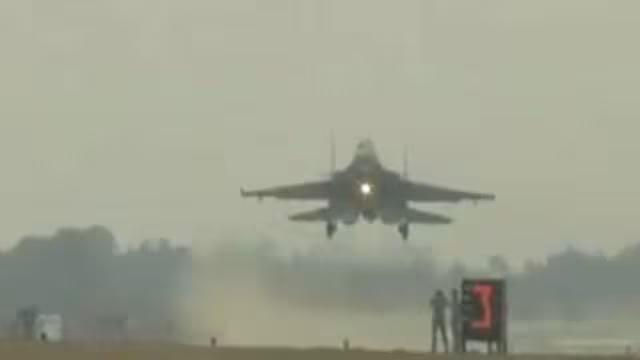
Title: Why is IAF conducting fighter jets’ landing & take-off drill at Ganga Expressway in UP?
The Indian Air Force (IAF) recently conducted a unique exercise on the Ganga Expressway in Uttar Pradesh, where fighter jets like the Rafale landed and took off at day and night. This exercise was a significant milestone in the history of Indian aviation, as it marked the first time an airstrip on an expressway in India was equipped to handle both day and night landings of fighter jets.
The exercise was conducted to assess the potential of the Ganga Expressway as an alternative runway during times of war or national emergencies. The expressway, which was built to connect Delhi to Varanasi, is a 594-kilometer-long, six-lane highway that passes through several districts in Uttar Pradesh. The IAF’s decision to conduct this exercise on the expressway highlights its potential as a strategic asset for the country’s defense.
The exercise was a comprehensive one, involving several fighter jets, including the Rafale, which is one of the most advanced fighter jets in the world. The jets took off and landed on the expressway, which was specially prepared for the exercise. The IAF’s pilots demonstrated their expertise and precision, conducting the landing and take-off operations with ease.
The exercise was conducted in two phases – day and night. During the day phase, the jets took off and landed on the expressway, while in the night phase, they did the same using their night-fighting capabilities. The exercise was a testament to the IAF’s capabilities and its ability to operate in a variety of environments.
The Ganga Expressway is strategically located, passing through several districts in Uttar Pradesh, including Lucknow, Kanpur, and Prayagraj. Its location makes it an ideal spot for an airstrip, as it can be used to quickly respond to any security threats in the region.
The exercise was a significant milestone for the IAF, as it marked the first time an airstrip on an expressway in India was equipped to handle both day and night landings of fighter jets. It also highlighted the potential of the expressway as a strategic asset for the country’s defense.
The exercise was a result of several months of planning and preparation by the IAF. The force had to ensure that the expressway was prepared for the exercise, which involved laying down a special kind of asphalt that could withstand the weight and speed of the fighter jets. The IAF also had to ensure that the expressway was equipped with necessary infrastructure, including lighting and communication systems.
The exercise was a major success, with the IAF’s pilots demonstrating their expertise and precision. The exercise also highlighted the potential of the Ganga Expressway as a strategic asset for the country’s defense.
The IAF’s decision to conduct this exercise on the Ganga Expressway is a significant development, as it marks the first time an airstrip on an expressway in India has been used for such a purpose. The exercise highlights the potential of the expressway as a strategic asset for the country’s defense and demonstrates the IAF’s capabilities and expertise.
In conclusion, the IAF’s exercise on the Ganga Expressway is a significant development in the history of Indian aviation. It highlights the potential of the expressway as a strategic asset for the country’s defense and demonstrates the IAF’s capabilities and expertise. The exercise was a major success, with the IAF’s pilots demonstrating their expertise and precision. The Ganga Expressway is now equipped to handle both day and night landings of fighter jets, making it a valuable asset for the country’s defense.






